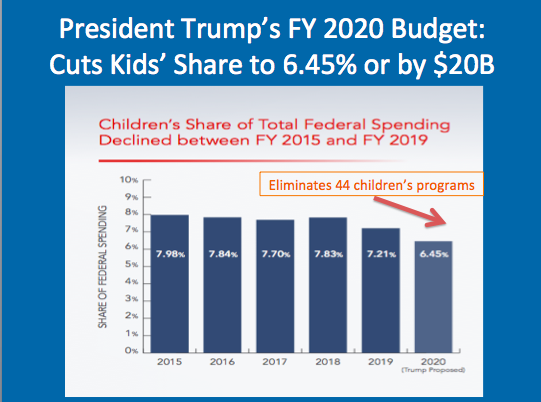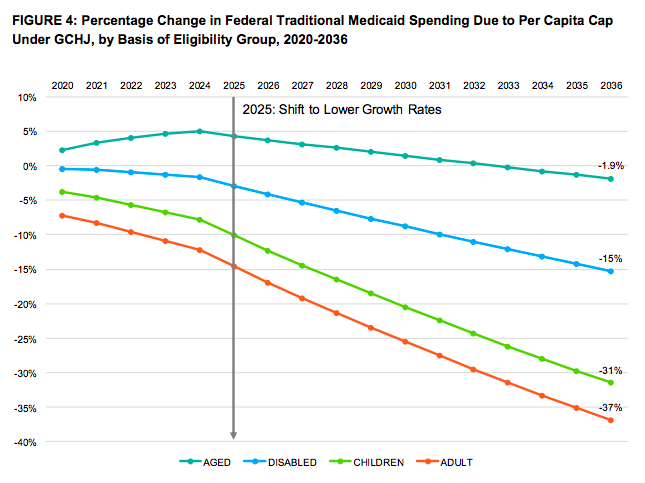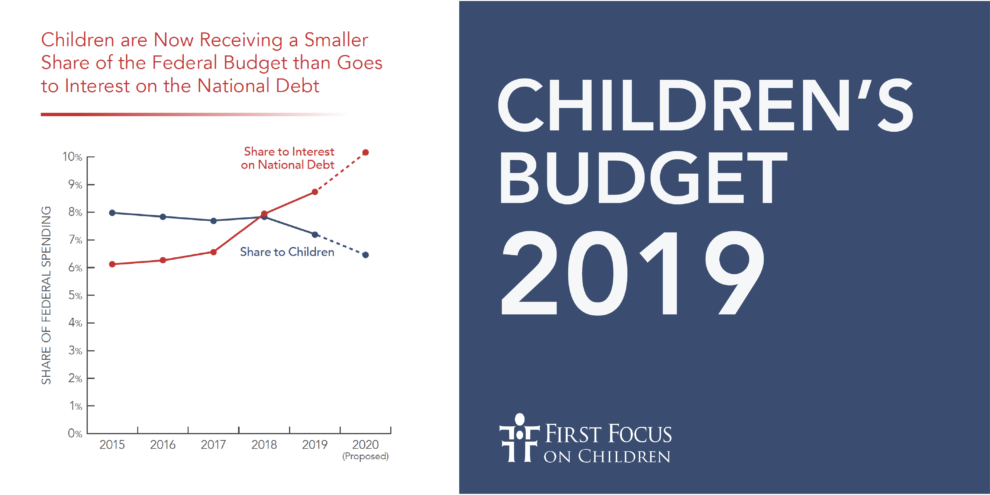The future of any society, by definition, depends on its ability to boost the health and well-being of the next generation. When we devote the resources necessary to support families and improve the services and programs that help all children be healthy, get a good education, and contribute to our nation’s future success, we all benefit.
Instead, we are shortchanging and failing our children. The Washington Post’s Catherine Rampell refers to the current situation as a “War on Children” and the Post’s Petula Dvorak writes how, on issue after issue, the country is “failing its children.”
The Post’s Colby Itkowitz adds:
The mistreatment or disregard of American and foreign children at the hands of the United States is not a new problem. . . When issues from guns to immigration to health care to foreign affairs are viewed through the lens of how they affect children, it becomes clear the young are an afterthought when it comes to public policy.
This is underscored by what is happening to children in the federal budget. In the Children’s Budget 2019 report we released at the National Press Club last week, we found that the share of all federal spending dedicated to children dropped from 7.98 percent in fiscal year (FY) 2015 to 7.21 percent in FY 2019 — a 9.7 percent reduction over the period.

Even worse, President Trump’s proposed FY 2020 budget would cause the share of federal spending on children to drop to just 6.45 percent — a real cut of $20 billion. His budget submission would eliminate 44 separate children’s programs and make cuts to far more.

One might speculate that the president’s budget attempts to reduce the deficit, but it is important to highlight that children are disproportionately targeted for the cuts. As our report highlights, Trump’s budget targets children for 17 percent of the cuts in domestic discretionary spending.
Moreover, we can also be pretty certain that the President’s proposed cuts on the mandatory side on the budget would also look to target children with greater harm. For example, according to the President’s FY 2020 budget narrative, the Administration supports “enactment of legislation modeled after the Graham-Cassidy-Heller-Johnson bill proposed in September 2017.”
That proposal would have established a Medicaid per capita cap and subjected children to much lower inflation rates and much higher cuts on a per capita cap basis. In fact, according to analysis by Avalere Health, Medicaid spending on children would have been cut by 31 percent compared to less than 2 percent for senior citizens.

In Children’s Budget 2019, we also estimate that interest on the federal deficit began exceeding all federal spending on children combined this year.

Under current law, things will only get worse over the next decade. The Urban Institute’s Kids’ Share 2018 report projects that the downward trend will continue well into the future. As the author’s explain:
Children’s programs are projected to receive just 1 cent of every dollar of the projected increase in federal spending over the next decade, compared to 61cents for [the adult portion of] Social Security, Medicaid, and Medicaid, and 29 cents for interest on the debt.
These facts all point to a growing crisis for children and our nation’s future. Unless dramatic changes are made to the federal budget process, and we begin to prioritize children in our society:
1) Investments in children will be a rapidly declining share of all federal spending;
2) The burden of the fast growing federal debt will be passed on to our children by adults who have favored cutting taxes and increasing defense spending over investment in children and reducing the federal deficit;
3) The rapidly growing share of Medicare and Social Security costs due to the retirement of Baby Boomers will be assumed by the next generation;
4) At some point, fiscal austerity measures will fall disproportionately upon our children and their children.
Economist Eugene Steuerle believes that the budget crisis is already upon us. In a Washington Post Op-Ed, Steuerle writes:
The costs are being incurred now; they’re not waiting for some fiscal blowup. The evidence is abundant: Education spending and other federal investments in children, as a share of gross domestic product, will fall by about one-eighth in about a decade. Programs that might promote economic mobility and opportunity for everyone make up an ever-smaller portion of the federal budget. Support for working families declines. College students get stuck with huge debts. Anyone visiting from abroad finds our airports and other transportation infrastructure second-rate. . . . These stories all relate to the decline of fiscal democracy.
In other words, even if Congress finds political will to make much needed investments in children, doing so will be difficult because the federal budget process is heavily stacked against kids.
A recent Committee for a Responsible Federal Budget (CRFB) report, Budgeting for the Next Generation: Does the Budget Process Prioritize Children?, finds that the budget process systemically disadvantages and shortchanges our nation’s children.
CRFB’s analysis concludes:
- While much of spending on adults is mandatory, spending on children is disproportionately discretionary and thus must be reviewed and renewed with other appropriations.
- Spending on children is disproportionately temporary, and it requires far more regular reauthorization and appropriation than programs for adults.
- Spending on adults is rarely limited while spending on children is often capped, constraining what can be spent for most major children’s programs.
- Most programs for children lack built-in growth, leading spending on children to erode relative to spending on adults and relative to the economy.
- Programs for children lack dedicated revenue and thus lack the political advantage and protection of programs for seniors that enjoy this benefit.
- Growing spending on adults is burdening younger generations by driving up debt and thus reducing future income and increasing costs.
As CRFB explains, “These features of the current budget process are increasingly leading spending on children to be crowded out, as the burden we place on children rises.”
Advocates seeking increased investments in children face serious political and structural barriers. As Children’s Budget 2019 and the reports by the Urban Institute and CRFB illustrate, children are not faring well — not at all.
However, according to a study entitled “A Unified Welfare Analysis of Government Policies” by Nathaniel Hendren and Ben Sprung-Keyser and published by Harvard’s Opportunity Insights, found:
- Direct investments in the health and education of low-income children have historically yielded the highest returns.
- Opportunities for high-return investments have persisted throughout childhood.
- Many direct investments in low-income children’s health and education have paid for themselves.
The policies that have historically invested in kids tend to be the ones that have the biggest bang for the buck. Because, oftentimes when you put in a dollar when a kid is young, it can have impact that then pays us back when those kids grow up.
Money matters. As Connecticut Rep. Rosa DeLauro (D-CT) points out:
The targeted investments and interventions we make now will make a lifetime of difference for the children they reach.
In an effort to achieve better investments and outcomes for children, more than 80 organizations have come together across all policy areas to form the Children’s Budget Coalition. Through this Coalition, child advocates have committed to work together to raise attention as to how the federal budget is shortchanging our children, both overall and within individual programs.
First Focus Campaign for Children, Save the Children Action Network, and other partners are also supportive of S. 1780, the “Focus on Children Act,” by Sen. Kamala Harris (D-CA) and S. 1776, the “Children’s Budget Act,” by Sen. Bob Menendez (D-NJ).
These two bills would direct the Congressional Budget Office (CBO) and the Office of Management and Budget (OMB), respectively, to provide reports to Congress on spending levels related to annual appropriations bills and the President’s budget with respect to spending on children.
The status quo of shortchanging our children is unacceptable. It leaves children worse off in both the short- and long-term. We can and must do better by our children, who are the future of our country.
